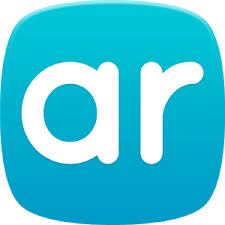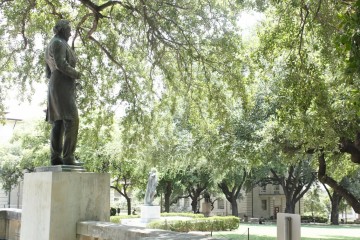To Our Usual Readers,
In lieu of a conventional blog post, and in preparation for the 2015 DWRL Digital Lesson Plan Open House, this post summarizes a lesson on augmenting a physical space to better understand arguments about the rhetoric of space — in this case, the DWRL itself (how meta!).
See ya next post!
The Augmented Reality Team
Augmenting a Space
- Learning Objectives
- How technology, specifically augmented reality (AR), betters our understanding of physical spaces.
- How AR increases people’s awareness of different arguments about space.
- How to engage with information more actively.
- Within this active engagement, how to synthesize information
- How to create content and information collaboratively.
- How students can bring other disciplines (e.g., computer science) to bear on writing.

The icon for the Layar app, the one students will use in this lesson plan.
- Necessary Tools and Software
- iOS or Android operating systems.
- An internet connection.
- Layar app.
- (For this demonstration, a “layar” has already been created for you.)
- Example Artifact
- Our “layar” (and the point of interest you will create within it for this demonstration).
- Lesson Instructions
- Download the Layar app from your respective app store.
- Go onto the Layar website and create a “layar” (remember: for this demonstration, one has already been created for you).
- Create point(s) of interest in our beta app.
- Go onto the “Our Mission” page on the DWRL’s website and excerpt information from the “Our History” section. Once you’ve decided on what information you want to use, paste it into the point of interest(s) you created in Layar. (In your actual lesson plan, you can use whatever information you want.)
- Reconvene and discuss the different types of information your students chose to excerpt.
- Use the LayAr App to scan the QR code here and visit the “layar”
- What did they think was important? Why?
- Assessment
- While this lesson isn’t suited for formal assessment, if you had to, we suggest grading on a clear demonstration of synthesis of research.

Check back with us during the 2015 End of the Year DWRL Showcase when we present our augmented reality project on the Confederate statues in the South Mall, which incorporates a lot of the above components!


